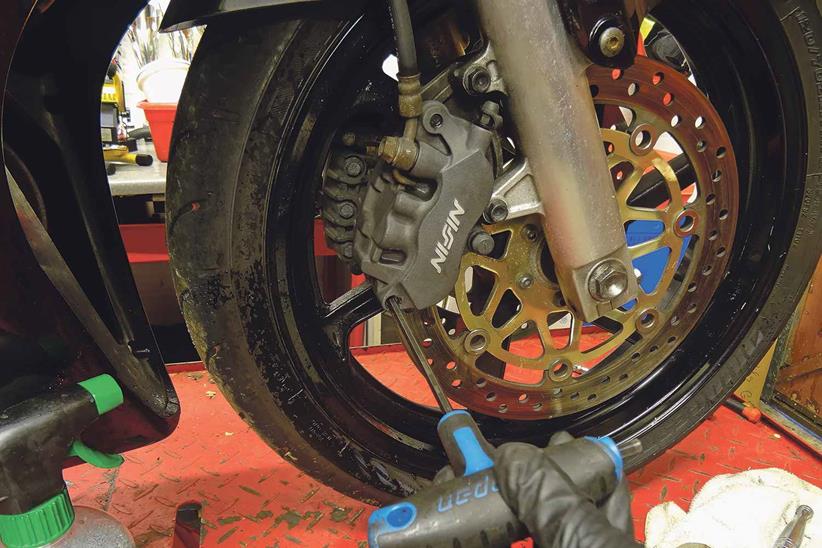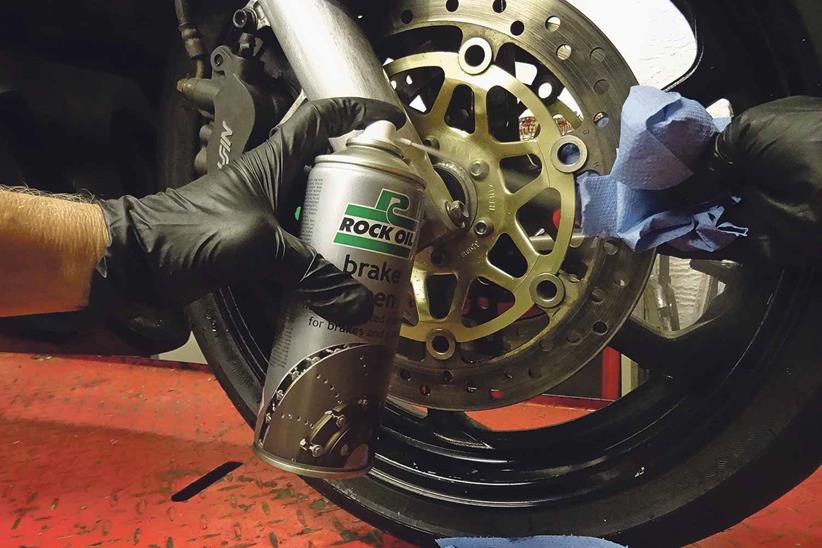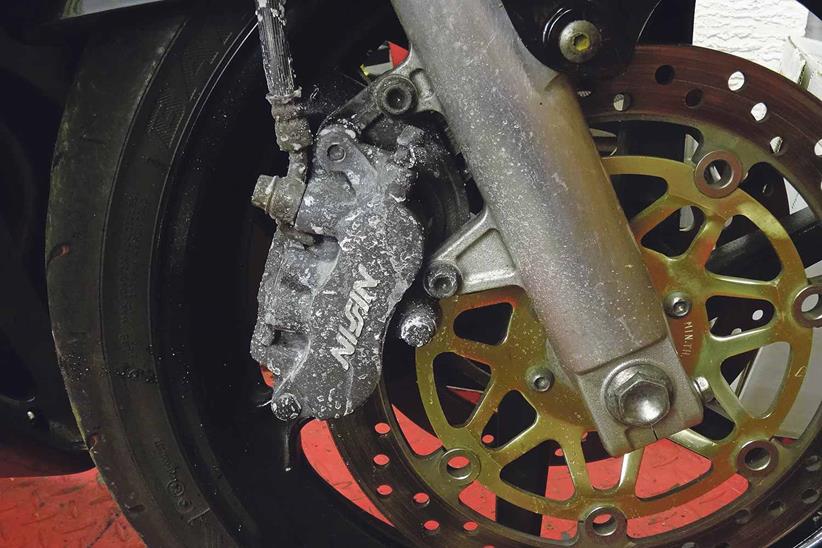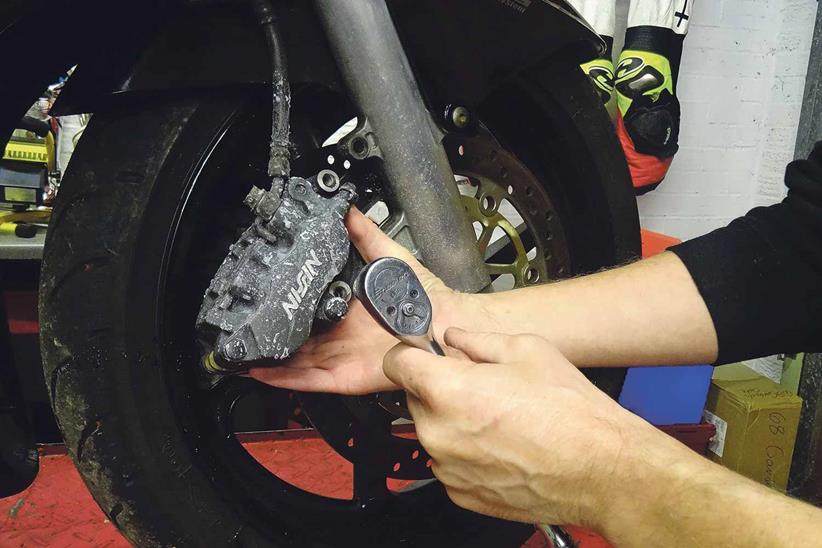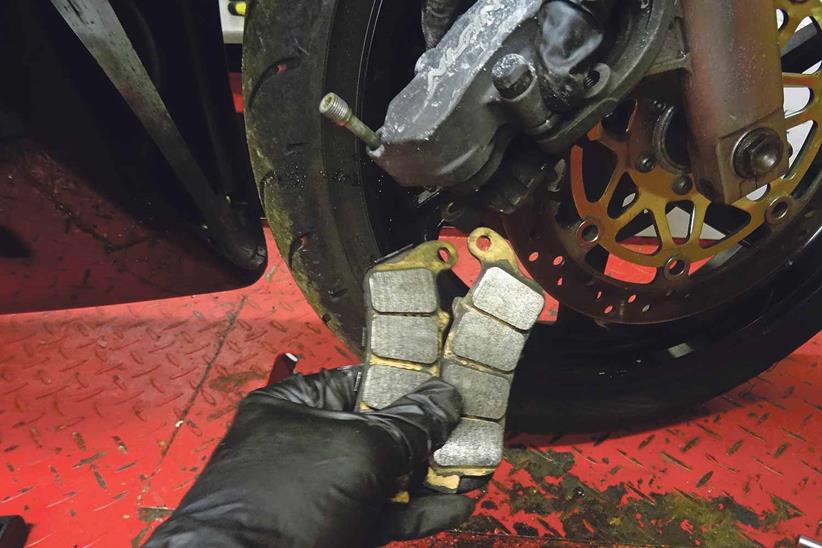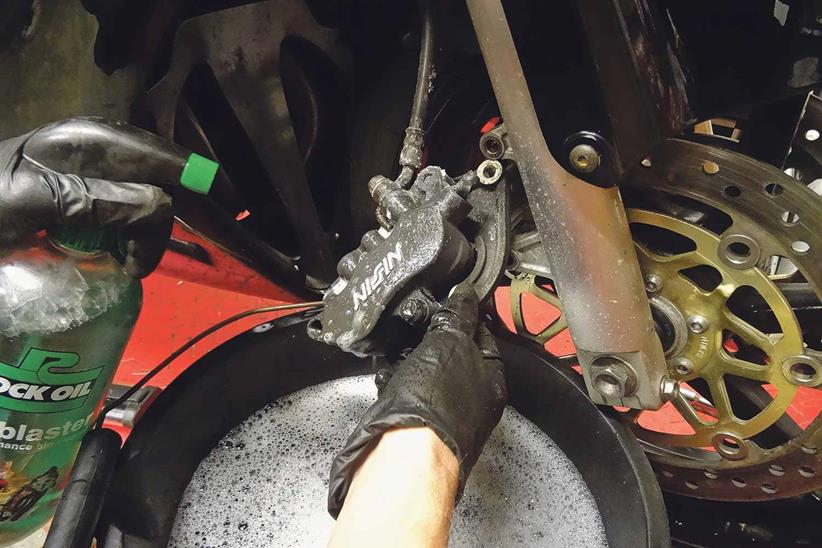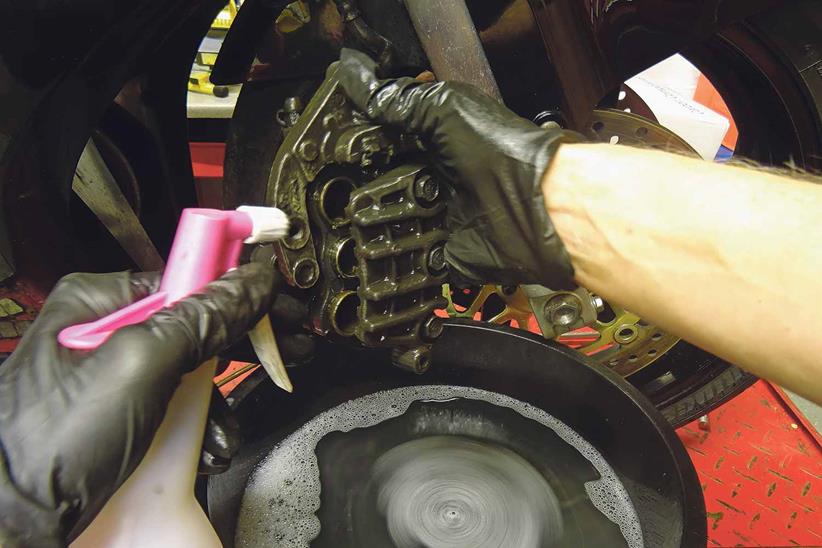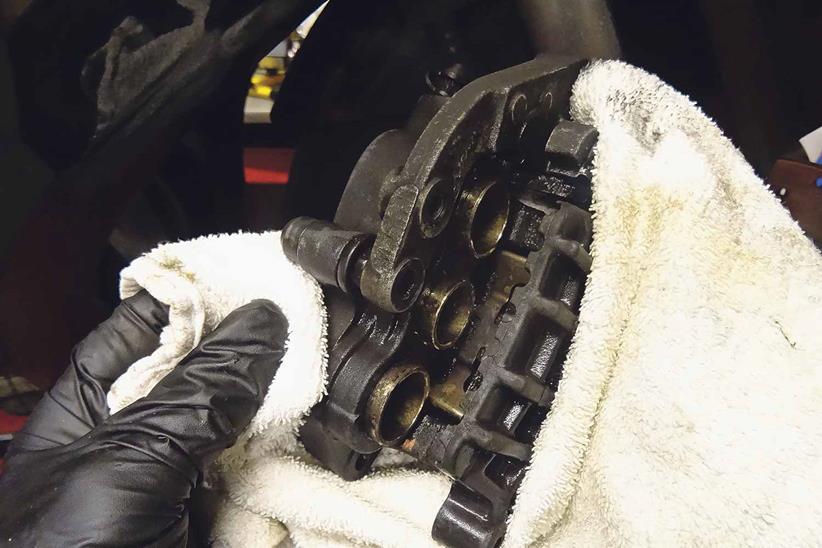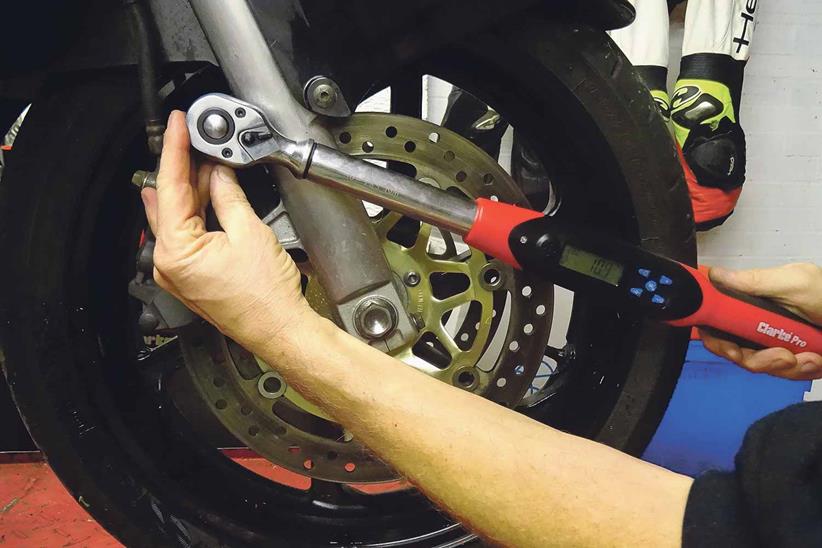Get your stoppers gleaming: how to clean your motorbike's brakes
Cleaning your brakes is an important step in motorcycle maintenance and a fairly easy one to do. The tools required are basic (allen keys, a socket set and a torque wrench) and the payoff is instant. Not taking care of your brakes can result in poor performance and increased stopping distances.
- Related: Best motorcycle maintenace spray
Over time, if you neglect your brakes, the pistons can seize in the caliper, which can increase wear on both the pads and the rotors. Confident home mechanics should be able to complete this job in well under an hour. If you’re a first timer, take your time and it should still take less than 90 minutes.
Braking battle
![]()
If you’re riding throughout winter it’s always going to be a battle keeping your bike clean. Anti-corrosion treatments help a lot, but areas such as the brake calipers can’t be protected so need their own cleaning routine to keep them in tip-top condition and free from a build-up of road salt.
Take it one side at a time
![]()
If you have a twin-disc set-up, work on one caliper at a time; with both calipers removed you run the risk of running out of brake fluid in the reservoir if the pistons are pumped out too much. Loosen the pad retaining pin, then undo the caliper mounting bolts and remove the caliper.
Pull out the brake pads
![]()
Pull out the brake pad retaining pin (if fitted) then remove the pads and inspect their condition. If they’re still in good nick, it’s good practice to return them to the same side of the caliper when being refitted, so ensure you mark them up. If they need replacing, compare new with old to make sure they’re the right pad for your bike.
Time to get soapy
![]()
Fill a bucket with warm water and add a bit of bike cleaner to it. Moisten the caliper with the water and then spray some cleaner directly on the caliper and allow to dwell for a minute or so. The cleaner will penetrate the encrusted dirt and contamination. Be careful not to allow any cleaner to overspray on to the brake disc.
Scrub and rub
![]()
Using a suitable nylon brush, agitate the cleaner paying attention to the areas that are inside the caliper, especially between the pistons. For stubborn deposits it will be necessary to re-apply the cleaner and repeat. For the seriously hard-to-shift muck, deploy a scotchbrite pad soaked with bike cleaner.
Sluice away the scuzz
![]()
Rinse away the dirt with a hose or by using a sponge soaked in fresh, clean water. Make sure that you thoroughly rinse between the pistons and also that the inside of the pistons aren’t harbouring a mini reservoir of scuzz. If there is still muck remaining go back a step and give the stubborn bits a second going over.
Towel off the moisture
![]()
Once you’re satisfied the caliper has been thoroughly rinsed, it’s time to dry it. An airline is the best method for blasting out every last drop of moisture, but if you don’t have one simply get to work with a towel. Make sure that you dry each of the pistons and that there is no water left in any of the crevices.
Re-fit the pads and caliper
![]()
When fitting new pads you’ll need to first gently push the pistons back. Do this by temporarily refitting the old pads, then insert a big screwdriver and gently apply pressure to push the pistons back inside. Install the new pads and pins. Then refit the caliper and tighten the brake pad retaining pins.
Bolt it up tight
![]()
Tighten the caliper bolts with a torque wrench to the value given in the manual. Check the tightness on any pad retaining fasteners. Pump the front brake lever; initially it should feel soft but after a few pumps it should regain some ‘feel’. Check the brake fluid level, top up if necessary from a freshly-opened bottle.
Don’t forget the disc
![]()
Using clean workshop paper, clean the disc on both sides with brake cleaner. Ensure that all contamination has been removed. Use a clean, stiff-bristled nylon brush for any hard to remove deposits of filth. Take a test ride. Be cautious if new pads have been fitted as initial performance will be poor prior to the pads bedding in.
Top tip – Avoid Traffic Film Remover!
Owing to the delicate rubber seals inside your calipers, you should only clean them with a specific bike cleaning solution. Failing that, a very weak solution of washing-up liquid.
One product that I’d definitely steer clear of for this task is ‘TFR’, or Traffic Film Remover. I first encountered its effects 30 years ago when I worked as a bike shop mechanic. In strolled one of our regular reps who presented us with this miracle cleaner that’d make anything look new with one application.
I sprayed a bike with water and applied the solution, then left it while I took a call. By the time I returned, the cleaner had eaten into the alloy components and no amount of scrubbing would eliminate the streaks that’d etched into the surface.
That was a long time ago so you’d have thought things had improved, but they haven’t. I saw it again the other week when we had a bike cleaned at a roadside wash. The operator had not watered down the TFR solution adequately and it resulted in damage to some of our bike’s finish. Some TFR are caustic, some not, but don’t risk using the stuff. The potential of damage the rubber seals on brake pistons is real.
